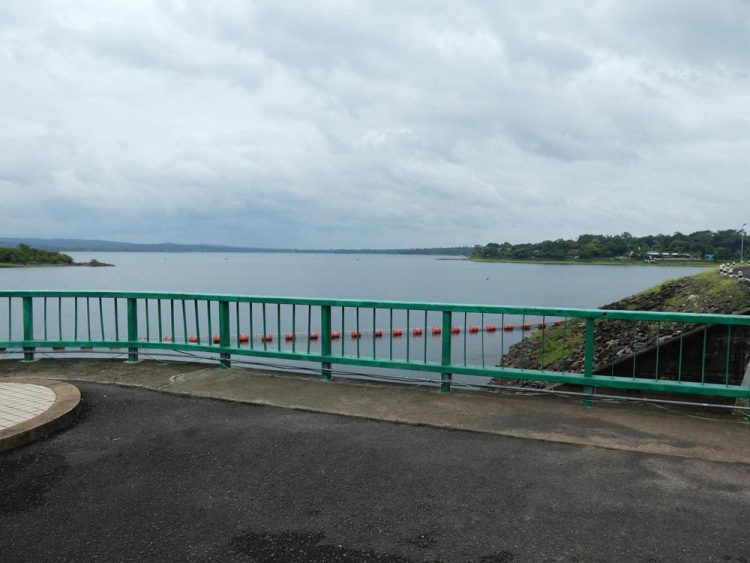A damming trend

Hundreds of dams are being proposed for Mekong River basin in Southeast Asia. The negative social and environmental consequences -- affecting everything from food security to the environment -- greatly outweigh the positive changes of this grand-scale flood control, according to new research by Michigan State University. Credit: Michigan State University
The results, published in the current issue of Scientific Reports, are the first to tackle the potential environmental changes that the overall basin could experience from harnessing the region's hydropower.
“The Mekong River is one of the few large and complex river systems that remains mostly undammed,” said Yadu Pokhrel, assistant professor of civil and environmental engineering and the study's lead author.
“However, the rapid socio-economic growth, increasing energy demands and geopolitical opportunities have led to basin-wide construction of large hydropower dams.”
In the basin's upper portion, dozens of mega dams are in the process of being built. In the lower region, hundreds of tributary dams are planned, and some larger ones also are being constructed.
While there are many positive effects of flood control, the researchers focused on the reduction of monsoon-driven floods that would be held back by the dams. These annual pulses provide much-needed water and nutrients to downstream regions.
“Any major alterations of the seasonal pulses could easily change the area's floodplain dynamics,” Pokhrel said. “This could severely affect a wide range of ecosystems and undermine regional food security.”
One waterway in particular, the Tonle Sap River that connects the Mekong River and Tonle Sap Lake, is one of the world's most-productive freshwater fisheries. Monsoons flood the Tonle Sap and actually reverse the river's flow each year. This brings water and sediments from the Mekong River into the Tonle Sap River as well as Tonle Sap Lake.
During the dry season, the flow normalizes and the lake drains into its namesake river, which eventually dumps into the Mekong River.
“Flow regulations could disrupt the flood dynamics of the Tonle Sap River,” Pokhrel said. “In fact, our models indicate that TSR flow reversal could cease completely if the Mekong River flood pulse is dampened by 50 percent and delayed by one month.”
The team of MSU scientists who were part of this study included Sanghoon Shin, Zihan Lin and Jiaguo Qi. Dai Yamazaki, from the University of Tokyo, also contributed to this research.
###
Michigan State University has been working to advance the common good in uncommon ways for 160 years. One of the top research universities in the world, MSU focuses its vast resources on creating solutions to some of the world's most pressing challenges, while providing life-changing opportunities to a diverse and inclusive academic community through more than 200 programs of study in 17 degree-granting colleges.
For MSU news on the Web, go to MSUToday. Follow MSU News on Twitter at twitter.com/MSUnews.
Media Contact
More Information:
http://go.msu.edu/FXHAll latest news from the category: Earth Sciences
Earth Sciences (also referred to as Geosciences), which deals with basic issues surrounding our planet, plays a vital role in the area of energy and raw materials supply.
Earth Sciences comprises subjects such as geology, geography, geological informatics, paleontology, mineralogy, petrography, crystallography, geophysics, geodesy, glaciology, cartography, photogrammetry, meteorology and seismology, early-warning systems, earthquake research and polar research.
Newest articles

Silicon Carbide Innovation Alliance to drive industrial-scale semiconductor work
Known for its ability to withstand extreme environments and high voltages, silicon carbide (SiC) is a semiconducting material made up of silicon and carbon atoms arranged into crystals that is…

New SPECT/CT technique shows impressive biomarker identification
…offers increased access for prostate cancer patients. A novel SPECT/CT acquisition method can accurately detect radiopharmaceutical biodistribution in a convenient manner for prostate cancer patients, opening the door for more…

How 3D printers can give robots a soft touch
Soft skin coverings and touch sensors have emerged as a promising feature for robots that are both safer and more intuitive for human interaction, but they are expensive and difficult…




















